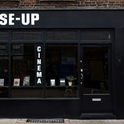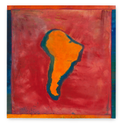First off, Bern. Capital of the Swiss Federation. Ancient and beautiful city, small but perfectly formed, neither Zurich nor Geneva and hence a sort of neutral (if primarily Swiss German-speaking) home for the central institutions of a neutral country that understands the complexities of sovereignty. Endless historical compromises between cantons; ongoing but fruitful tensions with the countries of the European Union that surround it.
I’m in Bern to sing more Britten, reminded as always of my sheer luck that the greatest composer of the post-war period—born in “das Land ohne Musik”, the land without music—wrote such a wealth of song in my own language. This time it’s the Serenade for Tenor, Horn and Strings, an anthology of settings of great English poetry with an arc that reaches from sleep through terror and back again, bathed in light, suffused with darkness, glittering, shadowed, on fire.
We’re performing in the auditorium of the Paul Klee Centre on the outskirts of the city, with the alpine Jungfrau in the not-so-distant distance (“snowy summits old in story,” as I get to sing in the second song of the cycle, courtesy of Alfred Lord Tennyson). It’s a great building by Renzo Piano, three waves undulating into the landscape. When I say that the auditorium is essentially and deeply red it makes it sound like a vulgar municipal mistake, but, in fact, it’s one of the most beautiful small halls I’ve performed in, with an intensity of colour that is a tribute to the presiding genius of the place, Klee himself.
One of the great joys of being a travelling performer has been visiting art galleries, and I’ve always enjoyed Klee’s work when I’ve encountered it over the years, without ever really taking it any further. What I hadn’t appreciated was his essential musicality: his father was a music teacher at the Bern State Seminary, his wife a pianist, and Klee himself was something of a musical prodigy, continuing to play violin professionally well into his adult life. “Even if you hadn’t told me he plays the violin,” his friend Rilke wrote in 1921, “I would have guessed that on many occasions his drawings were transcriptions of music.” His work speaks to us with a rare musicality, and the metaphors we use to describe music are somehow embodied there in form and colour, light and density, tone and texture, colour and form.
Actually, form is altogether too static a concept—and Klee’s own words, inscribed on a panel in the museum (which holds 40 per cent of his work), crystallise an understanding of visual expression that is fundamentally dynamic and musical: “Forming is good. Form is bad; form is the end; it is death. Forming is movement; it is action. Forming is life.”
♦♦♦
So now Lisbon—and the realisation that Portugal was the first European country I ever visited, aged six in the early 1970s. Pre-revolution, but Salazar was not on my six-year-old radar. I only remember the excellent fish. We nevertheless took our own supply of Marmite.
At the beginning of my career, I came to Lisbon a lot with the late, lamented Richard Hickox who conducted at the Gulbenkian Centre, with its remarkable art collection, concert hall and orchestra—and who loved to surf at Cascais. This time, I’m singing Schubert’s Die schöne Müllerin with the young Portuguese pianist (one to watch) Luis Duarte at the Cultural Centre in Belém, just along the coast. Belém is especially worth visiting for two things: the original Pastéis de Belém, which has been making the “pastel de nata”, the Portuguese egg tart, since 1837; and the Mosteiro dos Jerónimos, with its Manueline arches (early 16th century), a unique fantasy in stone somewhere between mariner’s ropes and octopus tentacles. Lisbon is all about the sea, and we stayed in the Palácio dos Arcos, from which Manuel I watched Vasco da Gama’s caravels set off for India, the vanguard of European imperialism.
♦♦♦
If Lisbon is about the sea, Sintra, a few miles inland, is about the mountains and the palaces, Byron’s “glorious Eden”. The craziest of those palaces, with the best view, is the Palácio da Pena, a lunatic confection of fantastical Gothic and imagined Moorish, built between 1842 and 1854 for Ferdinand II, the Portuguese king consort. Pena gives me my Anglo-Schubertian-Portuguese connection to consecrate the experience of singing Schubert Lieder in Belém. Ferdinand was in fact German, a member of the house of Saxe-Coburg-Gotha, which also supplied a prince consort for the English royal family; not for nothing is Pena known as the Portuguese Balmoral. The palace was partly modelled on the castles of the Rhine, prime sites of the German romantic spirit, though Ferdinand himself was born in the Vienna just as the Viennese Schubert started his composing career in 1816.
Die schöne Müllerin can feel very at home in Lisbon—and the audience welcomed her with open arms.













